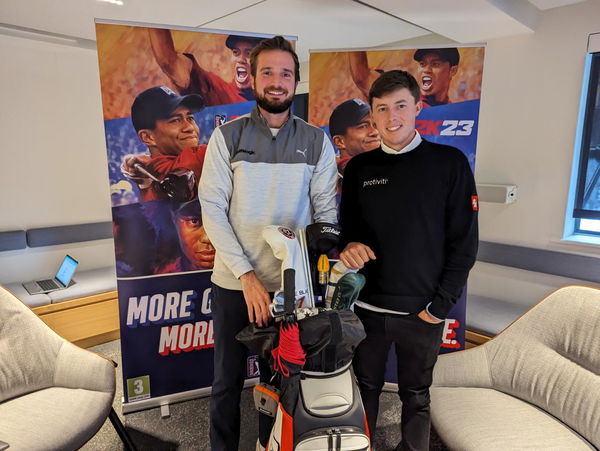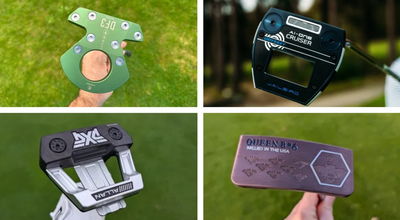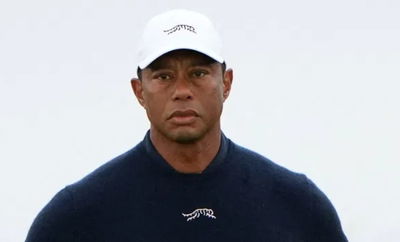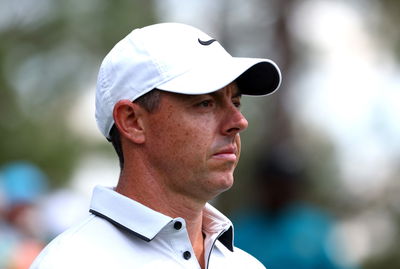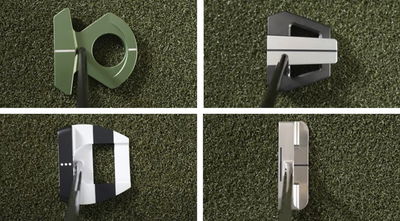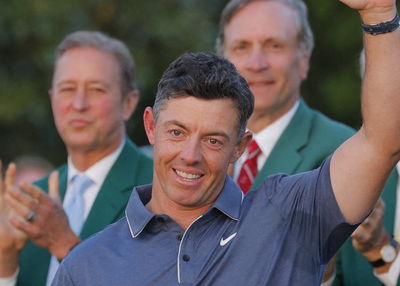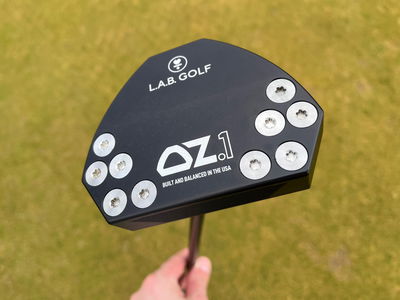Day in the life: Mizuno club designer Chris Voshall
Mizuno man talks club design, his 'AP2 killer', Donald's road to recovery & a mismatch in equipment
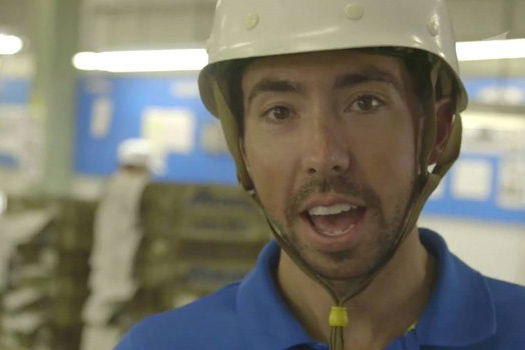
The typical thing I do is the actual engineering of the clubs.
No two days are ever the same, however, as we are always trying to see where we are in the development stage of our clubs.
I spend a lot of time with our 3D platform, Creo, which is kind of the nuts and bolts of the engineering, so this involves things such as moving mass around, running simulations for COR (coefficient of restitution), mass properties, MOI (moment of inertia), sound, vibration and analysing other data. That's what I spend most of my time doing.
From there, we'll have big lags between creating the product and actually testing it, so we will then send out for prototypes and wait for them to get in. During that time, we will be doing a lot of market research to understand and see what our competition is doing.
Review: Mizuno MP-25 iron
We purchase all of our competitors clubs, break them down and cut them up. We will test them when they come out the shop and then we will match the specs, build them with the same shafts, test them again with robot testing, player testing and sound testing.
As we get closer to mass production with the finer fine tuning, we will analyse the stuff from both ends. This will involve more testing, measurements and simulations on the clubs to see how they are all meshing up. Essentially, is the theory proving to be reality?
Often times this will be the case but sometimes it's not. For example, the sound or the feel may be slightly off. We have to be understanding to make sure we fix the issues before we go to mass production.
Our engineering team in Atlanta is a small group of five. In each meeting we will bring in one or two people from other departments to get their take on things which is kind of fun.
So we'll bring in someone from marketing to see what is happening in the market, and then other times we'll bring someone in from the supply chain side or the planning side who will drive us in the right direction in terms of how many sets we need to sell.
The great thing is, the team is always talking. We will sit down and have informal brainstorm sessions from time to time and attempt to put aside all the stresses we may have. We sit down and say 'Okay, let's have some ideas, what can we do, what might be fun, what are you reading outside of golf right now?'
Review: Mizuno MP-5 iron
That's all part of the fun of the brainstorming. I think it's important to not get stuck on what you're working on because to truly innovate you have to look outside your own little scope and try and understand other little things.
Outside of my team in the United States, we have a team in Japan who will be doing the same thing. We will typically have video conferences once a month for about four hours to see how both of our ideas are blending together. We go to them sometimes, they come to us sometimes, so it's very much a group effort.
As for Mizuno clubs themselves, I'd say some of the player cavity irons are probably the easiest to design just because the design goals aren't quite as aggressive.
A blade like the MP-5, however, is actually quite tricky to design just because it's tougher to move weight around on it. There are so many things locked on a blade, unlike an MP-62 or MP-64 for example.
Video: Mizuno Swing DNA fitting for MP-25 irons
With a JPX iron, we're trying to hit mass properties numbers for MOI and COR, so there are all sorts of things we're budding up against.
On the blade side, you have a set weight and then it's just how can we get any gain with that set weight or set dimension, so that can be really tough just because it's such a confined area.
With an MP-62 or MP-64, what you can do in the cavity to move the weight around is a lot easier just because you're not trying to hit a COR number.
Of all the clubs I've helped to design, however, I'd have to say the MP-59 gives me the greatest satisfaction.
We knew we had something cool on our hands when we launched the MP-58, but we knew there were kind of handcuffed in terms of how it was going to feel.
So with the 59, we were trying really hard to take the great technology from the 58 and turn it into something the better player would accept, just because the 59 got played on Tour while nobody played the 58. To me, that was almost a personal challenge as to how do we take what we know is cool technology and get it to speak to the best players in the world.
Review: Better player irons test 2016
I would say our new MP-25 is similar just in terms of getting the better player to accept Boron. The early signs are great, so the 25 could very well end up proving just as satisfying. This iron is going to help us reach a different player.
We've been trying to make a club that we say is our 'AP2 killer', and if I'm honest, we haven't previously executed perfectly on it because our headsize has got a little too big whereas the AP2 is compact. But this time around, I think we have it with the MP-25. It has everything the AP2 has plus it's got a little more ball speed.
Record sales: Mizuno MP-25 iron
Our new JPX EZ iron has been fun to design and it's arguably the furthest away from what people know from Mizuno. We've got cool stories about Boron this year and we know for a fact this iron is beyond anything else currently on the market in terms of the highest MOI and COR. It's got everything for the game improver.
Another gem we've got for 2016 is the better-player MP-5 which has been received really well, especially with it going straight in the bag of Luke Donald. This is a big step for us considering Luke is not much of a tinkerer.
Tour reaction: Mizuno MP-5 iron
Luke is really easy to work with, just because you know what Luke likes and what he doesn't like. He's not a player to put new clubs in play every week. He's never one to say 'this isn't working'. He will always have something in the bag that he feels comfortable with and he will work with it.
Chris Wood, on the other hand, is very open to change and likes to experiment a little more. He will sometimes say: 'I like this, but can you do this to it'. The JPX EZ driver is the perfect example. I was out with Chris in Munich recently and he told us what he liked about it and what he didn't like about it. So we worked with him on it until he was happy.
Instruction: The 60-yard shot with Luke Donald
I love working with our Tour players, they're great fun to work with. When you're at a Tour event, they're understandably no nonsense and not particularly jokey. When you go see them at their home course, they are much more at ease and there's often plenty of banter flying around.
Chris is playing some great golf at the moment but I fully expect Luke is going to get back to some of his very best golf soon.
Luke has been going through a transition period, changing coaches back and forth a couple of times. I feel he lost what made him Luke, the world number one player.
His short game struggled, he was making a push to get more distance and his putting weakened as a result. He's back with his former coach now, though, and he's got a good team around him. I know for a fact he's got a lot of his drive back now.
Article: Donald admits he considered retirement
It was disheartening to hear his recent comments about contemplating giving the game up, something I didn't previously know about, but I like the fact he's taking ownership over it now.
When he got to number one in the world, he was focused and worked really hard. The fact he has struggled recently has shown him he's got to get back on it in the long run. I saw a different look in his eyes when I was him a couple of months ago and I would definitely not be surprised to see him bag an elusive major in the near future.
Augusta has got super long but I fancy if he's going to win a major it will be The Masters. Even though he's not the longest player on Tour, he typically does well at long courses. I also like his chances at an Open Championship.
Missing out on the Ryder Cup in 2014, and particularly not getting a captain's pick, was definitely a wake up call for him. I know he was gutted to miss out on playing at Gleneagles that week, so I would be surprised if he doesn't make the 2016 team. I think we will start to see Luke on leaderboards more frequently this season.
As for my own career, like most people in the industry, my dad introduced me to the game when I was very young. We would always play a lot and then we got into the habit every Saturday morning where we would get breakfast and head to golf store to look at golf clubs.
That's kind of where my fascination with equipment came from. I always had an engineering mind and math background so when going into college I would say golf engineering was always the dream. I just didn't know how real it all was.
I kept my game in check as I grew older and kept in contact with all the golf contacts I had, before thankfully getting my name in with the right person at the right time at Mizuno.
New: Mizuno JPX EZ woods
I remember when I was 16 and I played the gorgeous T-Zoid blades all through college and I think that helped me in my interview! I have always been a Mizuno junkie, so they've always been for me. I have also always appreciated the Japanese culture.
This is my 12th year with Mizuno since starting out as a testing engineer in 2004. When I first applied, I saw a posting for a club designer role but I knew I was not even close enough to be qualified to get that position. I was fortunate enough that my boss who eventually ended up hiring me reached out and said I wasn't qualified for it but that they were opening up a test centre.
Once that opened up in South Atlanta, I was brought in to run the robotic golfer and physics lab there. That was a great first step on the ladder to becoming a club engineer because I learnt how the club works, how it's shaped, and picked up the intricate measurements to help me design in the 3D world later.
It was always my dream to work with the best player in the world so it was super cool when Luke got to number one for the first time in 2011, playing a set of clubs I worked on with the MP-62s. That was certainly my greatest Mizuno moment so far. It meant so much to me that I got him to sign one of his MP-62 irons, and I treasure it on my wall to this day.
The job is a fun one, but like everything, there are some tedious parts to it. The biggest drawback sometimes is the handcuffs of manufacturing.
Whenever you're trying to manufacture something, you get told 'no' a lot. It's something you have to get used to. So there might be things we want to do with a particular club, but we are told a thousand reasons as to why we can't, so that can be tough if something is not quite do-able yet.
New: Mizuno JPX EZ irons
However, we are getting more aggressive these days and it's becoming less of a thing because we are taking ownership. We've got to a point now where we are almost flying without a net a little bit. We've kind of got that attitude of 'let's do it and make it happen'.
The MP-25 is a great example. There were so many reasons as to why that club couldn't have been made that I feel like had we maybe approached that project five years ago it wouldn't have made it to market. We overcame a lot of those boundaries when launching it last season.
Typically irons take a two-year span from idea to manufacture but it took the MP-25 a little longer than that simply because we were trying something so different that we hadn't done before. We made it more compact, with a high COR and ensured it was more durable. We really had to be on point so that we could launch it on time.
Looking at the equipment industry right now, I feel some companies still haven't got the balance quite right.
The irons side of things is aimed towards a higher handicap player and the drivers are aimed at a lower handicap player. There seems to be a little mismatch there at the moment.
There appears to be a big focus on low spin with today's drivers that the MOIs have gone down really bad. So you are starting to see high handicap players forced to buy low spin, low MOI drivers that don't really help them.
Article: Mizuno drops price of graphite shafts in irons
With the irons, you're starting to see so many big game-improvement clubs that are trying to masquerade as player irons that really aren't. So I would say the better player iron side of things isn't that great right now.
I believe you will start to see some correction from brands later this year. Our direction at Mizuno is certainly to address that issue, which is why we have a playable JPX EZ line that features adjustability and then MP-25 and MP-5 irons for the better players.
In terms of some secrets for you guys at GolfMagic, all I can say is you will be surprised at our launch in 2017. We are typically very predictable at a fault, but we have a surprise for you next year.

